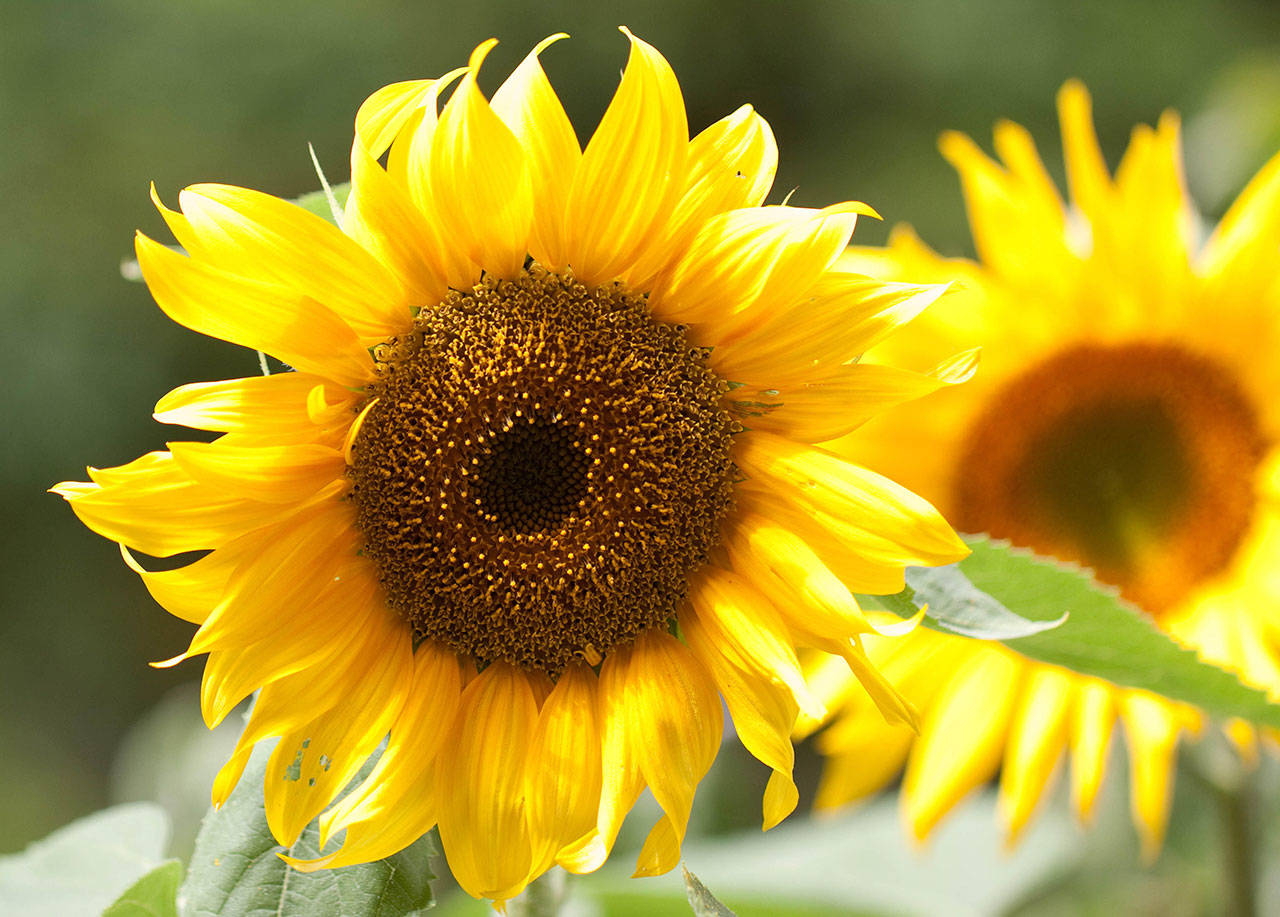July has arrived! Finally sunny days, perfect for basking and working in the garden.
With the warmer weather comes a significant drop in rainfall for the next 45 to 60 days. Last week’s “Get it Growing” article suggested using simple drip irrigation during the dry season. If that’s not possible, plan to water early in the morning or late in the afternoon to minimize water loss caused by evaporation.
If plants are wilted, water immediately. Water slowly and long enough to soak root zones. Keep in mind, all new plantings should be watered two to three times a week for the first year, even if they are “drought tolerant.”
Always water plants before adding fertilizer. There is lot of information to consider before fertilizing; download the free WSU Extension publication, “A Home Gardener’s Guide to Soils and Fertilizers.” This is an in-depth look at the interrelationship of soil and fertilizer. Go to pubs.extension.wsu.edu and enter “EM063E” in the search box.
Be aware that improper fertilization can hurt plants and the environment. It is recommended to get your soil tested every 2-4 years to see what type of amendment is appropriate.
Mulch, mulch, mulch! Add 2-3 inches of mulch to conserve water and suppress weeds.
Vegetables
Harvest vegetables as they mature. Pull out finished crops; replenish soil with compost.
For a fall/winter garden, sow broccoli, carrots, onions, parsley and peas by mid-July and bush beans, beets, kale and lettuce by the end of July.
Stop watering garlic as it naturally starts to dry, and harvest when four or five leaves are still green.
Gather and dry herbs. Watch tomatoes for late blight and immediately remove infected leaves and fruit.
Berries
Clean up and fertilize June-bearing strawberries after harvest (not day- neutral or ever-bearing strawberries). For erect and semi-erect blackberries top first- year canes when they reach about 4 feet high.
Continue organic fertilizing regimen for blueberries (1 tbsp fish emulsion in 1 cup water per bush) at beginning of month but do not use ammonium sulfate in July.
Consider covering fruiting plants with netting to protect harvest from birds and other wildlife.
Fruit trees
For a better harvest it’s important to thin the fruit (see sidebar). Thin plums to 2 to -inches apart on a branch; thin apples and pears to 1-2 fruits per cluster spaced 6-8 inches apart on the branch.
Support fruit tree branches that are heavily loaded. Remove water-sprouts and suckers from fruit trees.
Annuals
Sow cosmos, calendula and zinnia seeds now for September color. Annual bedding plants often go on sale this month, so you might want to fill in open spots with new plants that will keep flowering into early November.
Deadheading faded flowers is one of the most important tasks to extend flowering of all bloomers. Cut back straggly plants to improve their appearance and stimulate a second bloom.
Stake sunflowers that require support. Fertilize plants in containers every two weeks, as they lose nutrients from frequent watering.
Perennials
Compared to annuals and vegetables, perennials are a breeze to grow. If planted in a well prepared bed, they require little fertilizing, especially if you plant native plants, accustomed to the soil in your area.
One application of a balanced fertilizer, if needed, should be adequate in mid-summer unless plants show signs of yellowing or slow growth.
Stake tall plants such as lilies, dahlias and delphiniums early in their growth.
Harvest lavender just as the buds show color, but before they open.
Bulbs, corms, rhizomes and tubers
Divide and transplant crowded spring-blooming bulbs and rhizomes (including bearded iris, daffodils, tulips, etc.) if flowering has declined.
Dahlias are heavy food and water users. It takes a lot of energy to stimulate all that massive growth and flower production.
Feed monthly with a lower nitrogen fertilizer.
Shrubs and trees
If needed, prune spring-blooming trees and shrubs including forsythia, kerria, pieris, azalea, rhododendron, lilac and viburnum.
Susan Kalmar is a WSU-certified Clallam County Master Gardener.


